Play the LA River
- Public Policy
- Social Entrepreneurship
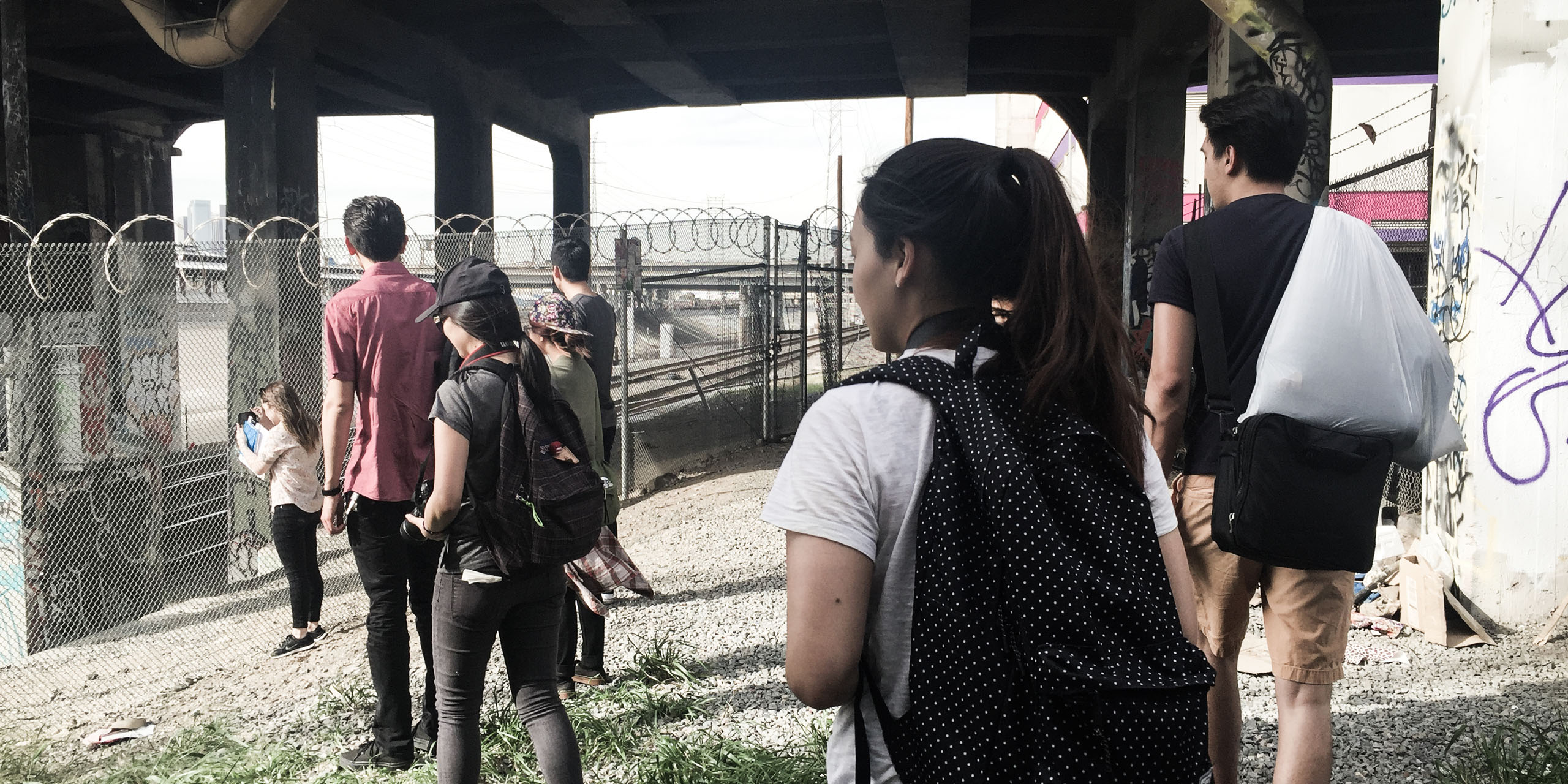
Spring 2016
In the Spring of 2016, Designmatters and the ArtCenter Humanaties & Sciences Department launcheda transdisciplinary studio course in partnership with the Los Angeles based arts collective, Project 51 and their flagship public art project, Play the LA River (PLAR). PLAR is a three-pronged public engagement project made up of an interactive card-deck featuring local artwork and personalized maps of the L.A. Riverfront, a website and social media campaign to share stories of engagement under the hashtag, #playthelariver, and a curated series of site-specific events, installations and performances on the L.A. River. Project 51 shared their work within the Designmatters studio to facilitate the students in launching their own independent projects that intersect urban watershed restoration, social needs for public space, and the protection of cultures and histories within the riverfront communities.
Students and faculty members from diverse disciplines came together to share expertise and examine how researching and making within real-world urban contexts can inspire creative interventions, foster cross-cultural dialogue, and engage critically with the ecological, social, political and cultural landscapes of the L.A. Riverfront. The students worked through ethnographic methods and fieldwork, conducting site-visits, participating in neighborhood council meetings, holding community interviews, and research prototyping with community members.
“The L.A. River is not an easy subject. River advocates have been working on these issues for 30 years and every layer of federal, state and local politics is involved and so it’s pretty hard to intervene. But for the students being forced to do something in a short period of time is great, because it meant they went with their creativity instead of letting the obstacles keep them from trying. The whole idea is to try to come up with some intervention and all the students made an intervention into these really complicated issues. More than that, they did that it in creative and provocative ways that were not a knee-jerk return to traditionalism.”
– Catherine Gudis, Project 51
Research and Development
In order for the students to make work that could situate in a real dialogue with the city’s urban revitalization process, a major task of the class was to bring the students up to speed on the history of the L.A. River:
– channelization
– its far-reaching effect on the politics and demographics
– its relationship to water and natural resource management
– public health
-transportation
And a myriad of other ways that the urbanized L.A. River has shaped the city. The first few studio sessions provided intensive crash courses with guest lecturers, followed by site visits to the L.A. River to provide context and immersion. After some initial exposure to primary and secondary research and fieldwork, students broke-off into teams based upon three major areas of exploration; urban ecology, gentrification and development, and recreation and leisure.
The class kicked off with a guest lecture from Dr. Catherine Gudis, a professor at UC Riverside and founding member of PLAR. Students quickly digested a broad history of the concrete river’s inception during the industrial revolution, a snapshot of current re-development projects, including the current restoration proposal by Frank Gehry, and an enthusiastic overview of the abundance of underrepresented art and cultural activities that have historically taken place within the Riverfront. In a separate studio session, students met landscape and permaculture designer, Marco Barrantes, owner of La Loma Development Company in Pasadena. Marco’s lecture gave the students crucial ecological information about the topography of Los Angeles, which is made largely invisible by the mounds of concrete that L.A. is so infamous for. Marco emphasized that despite visual obstruction, Los Angeles is a series of connected watersheds, with the L.A. River watershed situated at the center of the county. His work showed students how to prioritize sustainability within landscape design and building to promote the natural processes of the watershed, while also meeting the needs of the urban environment. The class discussed sustainable methods of erosion control, run-off water use, natural pools and landscaping with natural flora. This introduction to watershed studies fed directly into many of the students’ final designs.
A key theme of the course was the notion of bottom-up urban planning, via informed and participating communities. Play the LA River’s mission was to create a project that brings individuals out to the River, and through the concept of ‘play’, begin to think of themselves, and their participation as serving a political role in the physical re-imagining of the space. The L.A. River has transformed in extremely powerful ways through this method of grassroots re-imagining. To understand this history, students screened the film “Rock the Boat’, which follows an L.A. River kayak adventure that became a cornerstone in the redevelopment of the River. In this 2011 film, a group of environmental activists illegally kayaked the entire 51 miles of River in an effort to change the public’s perception of it as a sewage drain waterway. Their kayak trip and publicity caused the EPA to declare the L.A. River a ‘traditional navigable waterway’, thus giving it protection under the federal Clean Water Act, which has huge beneficial implications for protecting surrounding communities from toxic waste dumping in the River. These examples inspired the students to think about designing for public engagement as a catalyst for strengthening the voice of community members.
Some of the studio sessions were held outside the classroom, at selected access points along the L.A. River. This required the students to travel to different neighborhoods, and even cities, to build a sense of awareness around the diversity of cultures and environments that the L.A. River traverses. Students deployed their first research prototypes at a pocket park in Atwater Village, Red Car River park, then they visited a less amenable site in Boyle Heights under the Olympic Street Bridge. These sites sit in stark contrast to one another; where one is open, the other is barred off by highways, railroads and barbed wire fencing. Some of the students traveled as far as the Port of Long Beach, where the L.A. River meets the Pacific Ocean. One of the teams focusing on gentrification attended a Public Counsel ‘equitable redevelopment’ meeting, where they observed community members voting on the adaptive redevelopment of the historic Sears building located adjacent the River in Boyle Heights. On their own time, students visited a number of L.A. River non-profits, design firms, pop-up cafes, and residential areas.
The results of this rigorous fieldwork were extremely diverse, and culminated in an exciting student exhibition held at RAC Design Build, located at the banks of the L.A. River in Elysian Valley. Thanks to the students’ dedication to their research, they were able to build a network of River affiliates of their own to invite and engage in a dialogue about the possibilities for development, which they had designed. The guests included neighborhood residents, local artists, landscape architects and environmentalists. The students’ presented five projects ranging from a bold landscaping proposal to reduce and re-adapt the concrete banks in ways that challenge the entire legal structure of L.A. River access, to a vernacular signage proposal that leverages existing graffiti, to a peer-driven mobile app that promotes spontaneous exploration of the Riverfront.
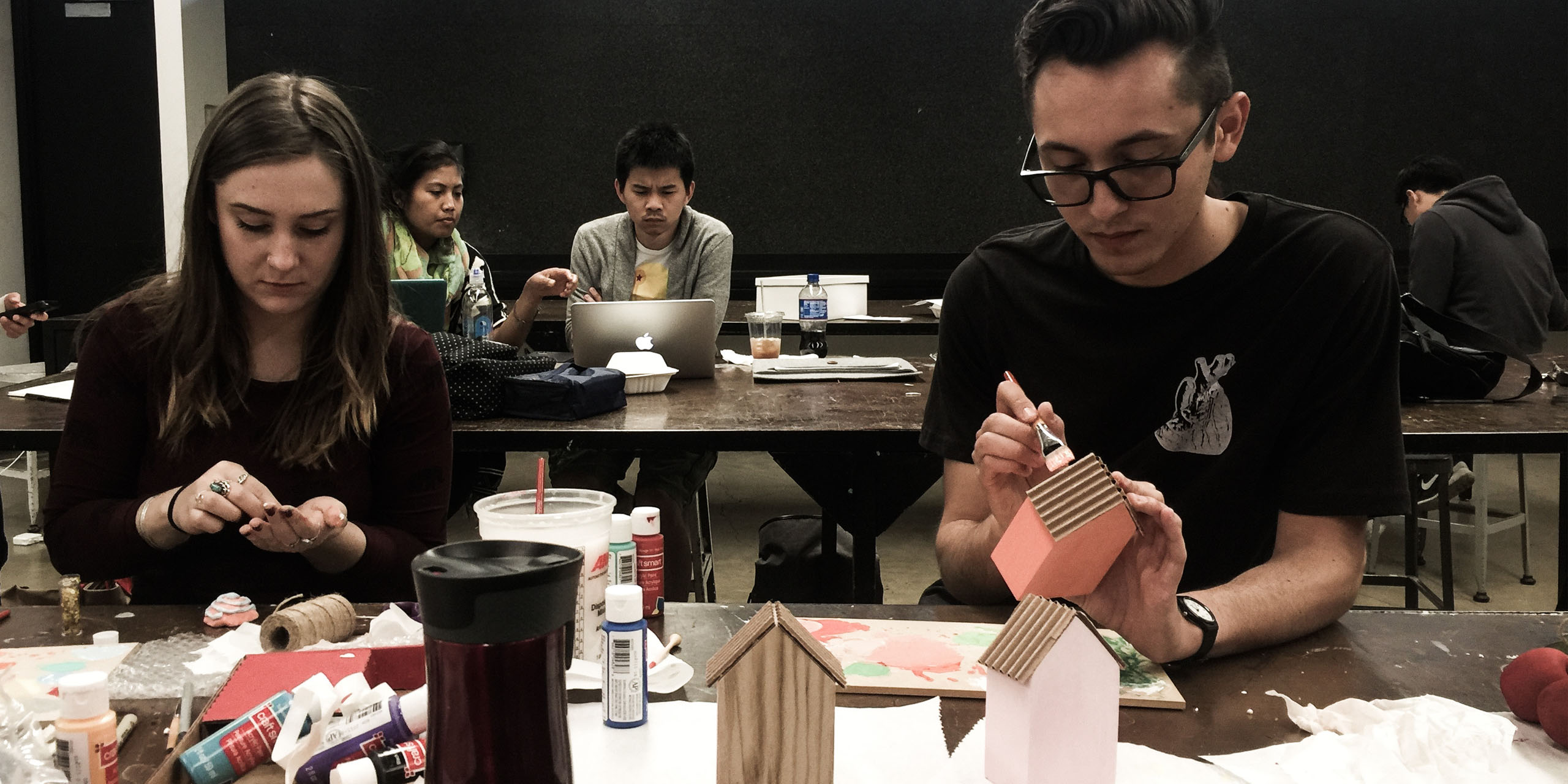
“The students took to heart that design could be a lot of different things. Very often, the idea is that ‘design solves problems’ but those problems are very narrowly defined. But here the students took on a much more expansive definition of what the problem is. They got political about it. The got ecological about it. They began to really see the bigger picture and what conversation their skills can lead them to participate in.”
– Arden Stern, Assistant Professor, Humanities & Sciences
Outcomes
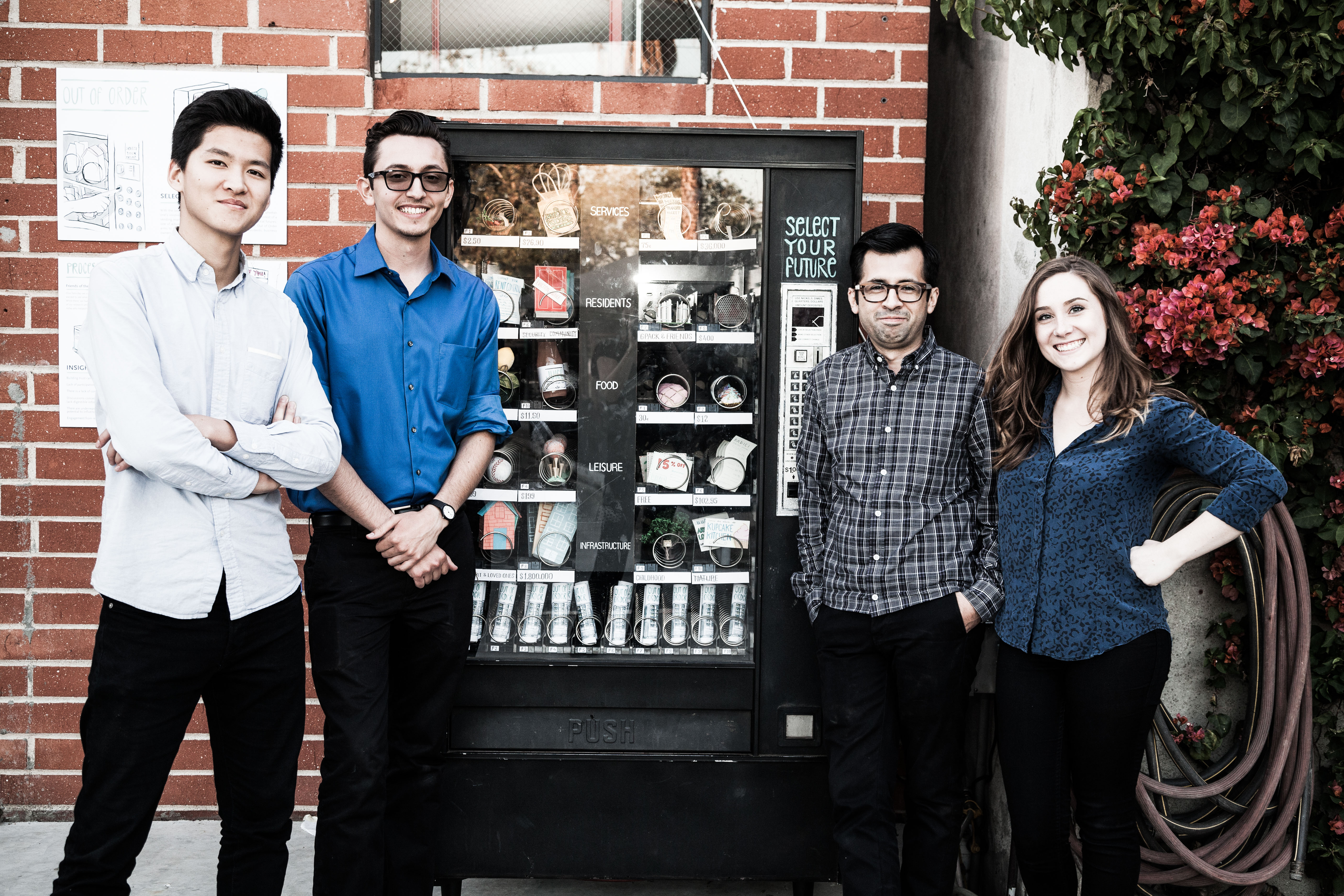 close
close
Out of Order – Speculative Design to Spark Conversation
Read moreRiley Gish, Jesus Jacobo, Christiahn Roman, Dali Yu
Addressing the gentrification of L.A. River neighborhoods, especially the Elysian Valley, this speculative design creation aims to engage stakeholders in discussions about the possible divergent futures of their community. The vending machine represents the often contrasting choices that changing communities have regarding food, shopping, transportation, housing, leisure activities and infrastructure. Inside this artistic metaphor for commerce, two items are offered per topic, one that involves active participation and the other that lacks direct engagement.
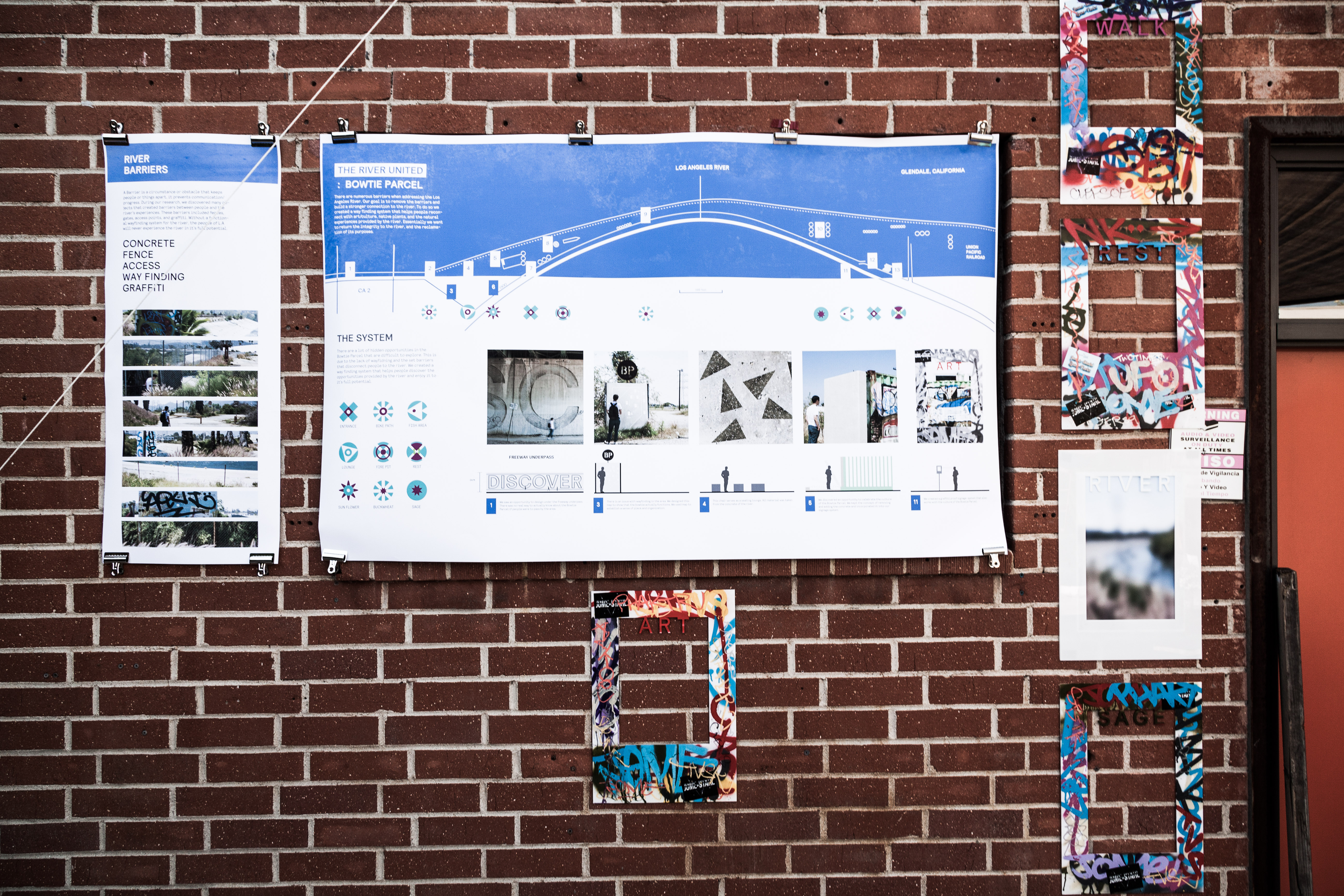 close
close
The River United – Wayfinding System
Read moreChenfgu Hsieh, Rueben Ramirez, Kristen Torralba
A series of directional signage for L.A. River’s Bowtie Parcel can intervene existing barriers to the urban waterway and connect individuals to the many aspects of the river – as a natural setting, a place for art/culture, and recreational uses. The system would remove and repurpose concrete walls as welcoming seating arrangements. Additionally, installed metal signs would call out river attributes and frame the landscape; sign design would incorporate the addition of inevitable graffiti to create mini works of art.
 close
close
LA Rio – Interactive App for River Exploration
Read moreFiona Chou, Mia Eum, Sun Gee Lee, Michael Rosales
To facilitate discovery of the L.A. River and its surroundings as a diverse adventure destination, an interactive phone app would call out and highlight commerce, art, history and recreation locations as well as provide transportation options. A myriad of information in one convenient app would point users to a specific selected area or theme as well as present random suggestions for more spirited “mysterious” explorations. Users can post photos and offer reviews of locations in a socially shared component.
 close
close
Local 13 – Architectural Redesign
Read moreMary Kim, Gina Om, Roy Ren
Making the L.A. River directly approachable to pedestrians, sections of the river’s 1934 concrete channels in Red Car River Park would be removed and architecturally reconfigured into an easily accessible river park with pathways, piers and lookout points. Repurposed concrete could be used as stepping stones across the flowing river. By removing the physical – and consequently the mental barriers – between people and waterway, this section of the L.A. River could be a communal open space destination.
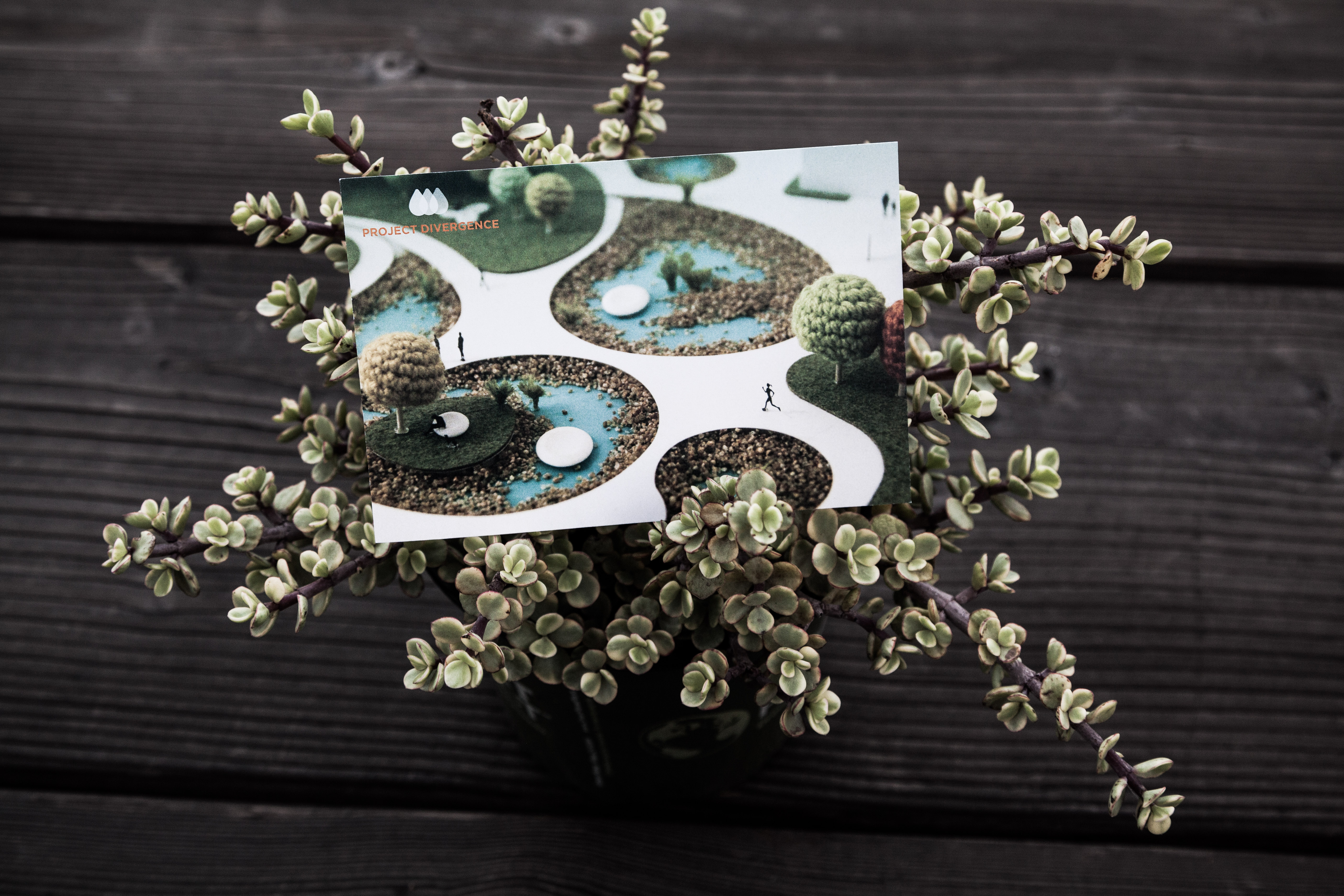 close
close
Project Divergence – Urban Park/Water Filtration System
Read moreJudy Chu, Chane Sumayoa, Jade Tsao
Envisioned at Taylor Yards near downtown L.A., this recreational environment is also a wildlife habitat that is constructed using sustainable water practices. The pocket park includes ponds fed with water pumped from the river and channeled through a natural water filtration system. The arrangement also employs a continual trash removal sweep. The mini-riparian wetlands will be landscaped with appropriate native plants and would incorporate bioswale designs that would reduce silt and pollution runoff into the nearby river.
Most of us were lost at the beginning of the term since this is such a complex project, but the faculty helped us refine ideas, be specific and discover what we really wanted to accomplish – what really made sense to our team and our strengths.
– Michael Rosales, Student, Graphic Design